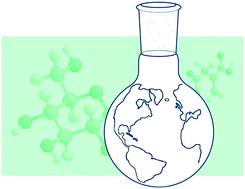In this review we will highlight some of the science that exemplifies the principles of Green Chemistry, in particular the efficient use of materials and energy, development of renewable resources, and design for reduced hazard. Examples are drawn from a diverse range of research fields including catalysis, alternative solvents, analytical chemistry, polymer science, and toxicology. While it is impossible for us to be comprehensive, as the worldwide proliferation of Green Chemistry research, industrial application, conferences, networks, and journals has led to a wealth of innovation, the review will attempt to illustrate how progress has been made toward solving the sustainability goals of the 21st century by engaging at the molecular level.
You have access to this article
 Please wait while we load your content...
Something went wrong. Try again?
Please wait while we load your content...
Something went wrong. Try again?


 Please wait while we load your content...
Please wait while we load your content...